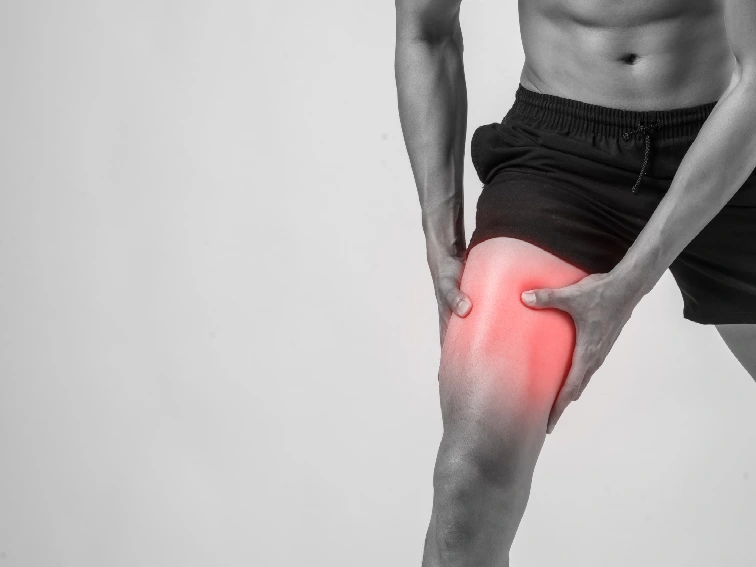Diaphyseal femur fracture, also known as femoral shaft fracture, is a common type of bone fracture that occurs in the long bone of the thigh, known as the femur. These fractures typically happen due to high-energy trauma, such as car accidents or falls from a significant height. Understanding the causes, symptoms, treatment options, and recovery process is crucial for individuals dealing with diaphyseal femur fractures. In this article, we will explore these aspects in detail to provide you with valuable information.
Causes of Diaphyseal Femur Fracture
Diaphyseal femur fractures can occur as a result of various causes. The most common cause is trauma, which can be attributed to high-energy accidents like car crashes, motorcycle accidents, or falls from heights. Sports-related injuries, such as those occurring in contact sports like football or skiing, can also lead to femur fractures. Additionally, individuals with weakened bones due to conditions like osteoporosis or bone tumors may be more susceptible to diaphyseal femur fractures even from minor trauma.
Symptoms of Diaphyseal Femur Fractures
When a diaphyseal femur fracture occurs, there are several symptoms that may manifest. These include:
- Severe pain in the thigh or groin area
- Inability to bear weight or walk
- Swelling and bruising around the affected area
- Visible deformity or angulation of the leg
- Limited range of motion in the hip or knee joint
- Numbness or tingling in the leg, indicating potential nerve damage
If you experience any of these symptoms after a traumatic event or suspect a diaphyseal femur fracture, it is important to seek immediate medical attention.
Treatment Options for Diaphyseal Femur Fractures
The treatment of diaphyseal femur fractures depends on various factors, including the severity of the fracture and the patient’s overall health. Here are some common treatment options:
Non-Surgical Treatment: In some cases, if the fracture is stable and the bones are aligned properly, non-surgical treatment methods may be employed. This typically involves immobilizing the leg with a cast or brace to allow the bones to heal naturally over time. However, this approach is less common for diaphyseal femur fractures due to their typically unstable nature.
Surgical Treatment: Surgery is often the preferred treatment for diaphyseal femur fractures, especially if the fracture is displaced or unstable. Surgical options include:
Intramedullary Nailing: This is the most common surgical technique used for diaphyseal femur fractures. It involves inserting a metal rod into the marrow canal of the femur to stabilize the fracture. The rod is usually secured with screws or locking mechanisms to provide stability during the healing process.
Plate and Screw Fixation: In some cases, a plate and screws may be used to fixate the fractured bone. The plate is attached to the outside of the bone, and screws are inserted to hold the fractured fragments together.
External Fixation: This method involves using external frames and pins to stabilize the fracture. It is typically used in cases where there is significant soft tissue damage or when other methods are not feasible.
Recovery Process for Diaphyseal Femur Fractures
The recovery process for diaphyseal femur fractures can be lengthy and requires patience and adherence to medical guidance. Here are some important points to consider during the recovery phase:
Physical Therapy: Following surgery or immobilization, physical therapy plays a crucial role in the recovery process. A physical therapist will guide you through exercises to improve strength, flexibility, and range of motion in the affected leg. This helps prevent muscle atrophy and promotes proper healing.
Weight-Bearing Progression: Initially, you may need to avoid putting weight on the affected leg. As healing progresses, your healthcare provider will gradually allow partial or full weight-bearing activities. It is important to follow their instructions and not rush the process to prevent complications.
Nutrition and Lifestyle: A balanced diet rich in essential nutrients like calcium, vitamin D, and protein is vital for bone healing. Quitting smoking and reducing alcohol consumption can also aid in the recovery process by promoting better bone health.
Follow-up Care: Regular follow-up appointments with your orthopedic specialist are crucial to monitor the healing progress and make any necessary adjustments to your treatment plan.
Conclusion
Diaphyseal femur fractures are significant injuries that require prompt medical attention and appropriate treatment. By understanding the causes, symptoms, treatment options, and recovery process associated with these fractures, individuals can make informed decisions and actively participate in their own healing journey. If you suspect a diaphyseal femur fracture or experience any symptoms, do not hesitate to consult a healthcare professional for a proper diagnosis and guidance towards recovery. Remember, the road to recovery may be challenging, but with proper care and perseverance, you can regain mobility and return to an active lifestyle.
FAQs
What is a diaphyseal femur fracture?
A diaphyseal femur fracture is a type of bone fracture that occurs in the long bone of the thigh, known as the femur. It involves a break in the middle (diaphysis) of the femur bone.
What causes diaphyseal femur fractures?
Diaphyseal femur fractures are commonly caused by high-energy trauma, such as car accidents, falls from heights, or sports-related injuries. Weakened bones due to conditions like osteoporosis can also increase the risk of these fractures.
What are the symptoms of a diaphyseal femur fracture?
Symptoms of a diaphyseal femur fracture may include severe pain in the thigh or groin area, inability to bear weight or walk, swelling and bruising around the fracture site, visible deformity or angulation of the leg, limited range of motion in the hip or knee joint, and numbness or tingling in the leg.
How are diaphyseal femur fractures treated?
Treatment options for diaphyseal femur fractures depend on various factors. Non-surgical treatment methods, such as casting or bracing, may be used for stable fractures. However, surgery is often necessary for displaced or unstable fractures. Surgical options include intramedullary nailing, plate and screw fixation, or external fixation.
What is the recovery process like for diaphyseal femur fractures?
The recovery process for diaphyseal femur fractures can be lengthy. It typically involves physical therapy to regain strength, flexibility, and range of motion in the affected leg. Weight-bearing progression, nutrition and lifestyle considerations, and regular follow-up care are also important aspects of the recovery process.


